Are you a Quiet Speculation member?
If not, now is a perfect time to join up! Our powerful tools, breaking-news analysis, and exclusive Discord channel will make sure you stay up to date and ahead of the curve.
It has been a frustrating year for analyzing the Modern metagame, as multiple bannings and an influx of new cards have churned its natural state. Things are finally starting to stabilize, which means that a reasonable picture is forming. We've got a burst of new data to thank for that quieting down.
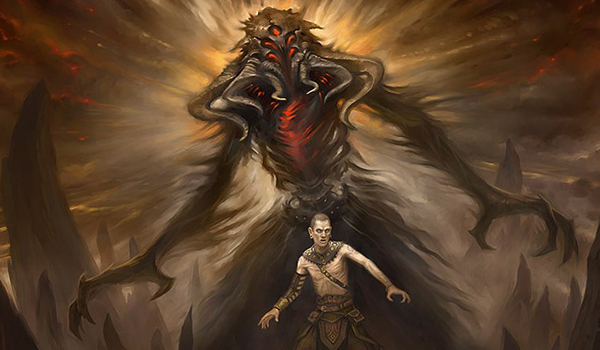
Nonetheless, the new data isn't perfect; its most questionable factor is its source. All the events I'm working with, and most of what's on the horizon, are Star City Tour events, which aren't the best indicators of the overall metagame for a couple reasons.
The tour is limited to the eastern US and is dominated by eastern teams; it doesn't actually represent the global player base, nor the metagame as a whole. Its results must be taken with a grain of salt.
Regionals Metagame
I'd intended to analyze Regionals last week, but the results weren't in yet. The wait ended up providing a strong contrast for Atlanta's results. As usual, since Regionals is not a singular event but spread out events on the same day, it is more likely to indicate the overall metagame than any individual event. The starting population is more likely to be reflective of the overall population the larger it is, and spreading it out helps alleviate local bias. Therefore, Regionals is more likely to represent an accurate view of the overall US metagame than SCG Atlanta.
| Deck Name | Total # |
|---|---|
| Amulet Titan | 12 |
| Mono-Green Tron | 9 |
| Jund | 7 |
| Dredge | 6 |
| Grixis Death's Shadow | 4 |
| Bant Snowblade | 3 |
| Mono-Red Prowess | 3 |
| Burn | 3 |
| Titanshift | 3 |
| Jund Death's Shadow | 3 |
| UW Control | 3 |
| Humans | 2 |
| Esper Control | 2 |
| Whirza | 2 |
| UW Stoneblade | 2 |
| Infect | 2 |
| GW Eldrazi | 2 |
| Eldrazi Tron | 2 |
| Jeskai Control | 1 |
| Gifts Storm | 1 |
| Urza Ascendancy | 1 |
| Slivers | 1 |
| Gruul Ponza | 1 |
| Naya Stoneblade | 1 |
| Hardened Scales | 1 |
| Urza Outcome | 1 |
| Niv-Mizzet Reborn | 1 |
| Esper Stoneblade | 1 |
| Urza Midrange | 1 |
| Counters Company | 1 |
| Ad Nauseam | 1 |
| Sultai Death's Shadow | 1 |
| Izzet Control | 1 |
| Crabvine | 1 |
| Blue Moon | 1 |
| Sultai Midrange | 1 |
The top decks are remarkably similar to what we saw in Indy, with the exception of very little Urza. That archetype didn't even crack the top 10 decks. Why isn't immediately clear, but it's worth remembering that this is not an uncommon result. Some decks perform better in long events than in shorter ones, and it is possible that Urza is one such deck.
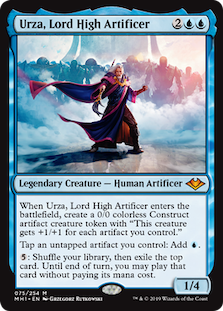 Decks having different win rates based on tournament length is hard to observe or quantify, but in my experience it typically occurs due to the players and decks that show up to bigger events being more mainstream than smaller ones, and thus easier to prepare for. However, in some cases, the result comes down to variance. Decks with higher good variance have more opportunity to do so the longer the tournament and make up for any bad variance. Meanwhile stable variance decks will be favored in shorter tournaments. They may also get relatively easier to play as fatigue sets in.
Decks having different win rates based on tournament length is hard to observe or quantify, but in my experience it typically occurs due to the players and decks that show up to bigger events being more mainstream than smaller ones, and thus easier to prepare for. However, in some cases, the result comes down to variance. Decks with higher good variance have more opportunity to do so the longer the tournament and make up for any bad variance. Meanwhile stable variance decks will be favored in shorter tournaments. They may also get relatively easier to play as fatigue sets in.
It is also possible that Urza was a bad call for Regionals. Despite Indy suggesting Urza's potential to dominate, the deck leans heavily on its namesake card; perhaps players were aware and ready. A sampling of all the reported decks shows a high concentration of artifact hate and Torpor Orbs, which shuts down both the Thopter Combo and Urza's enters ability.
Also, Dredge did well. There wasn't much graveyard hate in the decklists. These facts are linked.
Atlanta Day 2
And then we have the sharp contrast of SCG Atlanta. Everything that I speculated about the data from Regionals is strongly contradicted, to the point that it makes one question my sanity in making said speculations.
| Deck Name | Total # |
|---|---|
| Simic Whirza | 10 |
| Amulet Titan | 9 |
| 4-Color Whirza | 7 |
| Mono-Green Tron | 7 |
| Burn | 7 |
| Crabvine | 6 |
| Titanshift | 5 |
| Grixis Death's Shadow | 5 |
| Eldrazi Tron | 5 |
| Jund Shadow | 4 |
| Jund | 4 |
| Infect | 3 |
| UW Control | 3 |
| Affinity | 3 |
| 4-Color Death's Shadow | 2 |
| Urza Midrange | 2 |
| Urza Outcome | 2 |
| Dredge | 2 |
| Temur Snow | 2 |
| Mono-Red Prowess | 2 |
| Sultai Death's Shadow | 1 |
| Jeskai Saheeli | 1 |
| Merfolk | 1 |
| Counters Company | 1 |
| UW Stoneblade | 1 |
| BW Stoneblade | 1 |
| Bant Stoneblade | 1 |
| Devoted Devastation | 1 |
| Lantern Control | 1 |
| Niv-Mizzet Reborn | 1 |
| Humans | 1 |
| Gruul Karn | 1 |
| NeoBrand | 1 |
| 4-Color Soulherder | 1 |
| Bant Eldrazi | 1 |
| Urza Ascendancy | 1 |
| Zoo | 1 |
| Gruul Aggro | 1 |
| Mono-Green Aggro | 1 |
For reasons unknown, StarCityGames didn't lump the singleton decks together as "Other." Such would be the largest category if they had, as per usual.
However, the story is the Simic Whirza deck that sits atop the standings. 4-Color Whirza is the third best deck with a scattering of other versions present, making Urza the most popular archetype in Atlanta. I'd actually hesitate to differentiate the Simic and 4-Color decks, as most of the latter feature the exact same gameplan as the Simic decks: the idea is to use Emry, Lurker of the Loch to loop Mishra's Bauble for card advantage, play as many artifacts as possible, and make them into 3/3 Elks with Oko, Thief of Crowns. Few decks can withstand planeswalker upticking to produce Wild Nacatls. The pure Simic decks go in on food generation with Gilded Goose, while the 4-Color decks have Goblin Engineer and sideboard black cards.
Amulet Titan continues to be the best-performing non-Urza deck by a mile, followed by Tron tied with Burn. It's hard to say why Amulet is doing so well, but I suspect that player focus on beating Urza is a significant factor.
Atlanta Top 32
For all its domination in the standings, Urza didn't win the Open. That honor went to Grixis Death's Shadow; Thoughtseize into Gurmag Angler with Stubborn Denial backup is just as strong as it ever was against decks with few relevant cards and fewer answers.
| Deck Name | Deck Title |
|---|---|
| Simic Whirza | 9 |
| 4-Color Whirza | 5 |
| Amulet Titan | 3 |
| CrabVine | 2 |
| Grixis Death's Shadow | 2 |
| Devoted Devastation | 1 |
| Eldrazi Tron | 1 |
| Humans | 1 |
| UW Stoneblade | 1 |
| 4-Color Shadow | 1 |
| Gruul Karn | 1 |
| Urza Outcome | 1 |
| Urza Midrange | 1 |
| Jeskai Saheeli | 1 |
| Infect | 1 |
| Jund | 1 |
For all the thought that Shadow kept Urza in check, the Artificer still put by far the most decks into the Top 32. And five Simic decks into the Top 8. Amulet was a distant third, as might be expected given its starting population. The rest of the Top 32 is full of interesting decks, indicating a dynamic and healthy Modern, but it's hard to ignore the 14 decks packing Urza.
Classic Correlation
Normally at this point, I'd have a "wait!" and show that the Classic wildly contradicts the Open and muddies the picture. Today's report diverts from this tradition.
| Deck Name | Total # |
|---|---|
| Simic Whirza | 4 |
| Grixis Death's Shadow | 2 |
| Izzet Delver | 1 |
| Jund Goblins | 1 |
| Mono-Green Tron | 1 |
| Amulet Titan | 1 |
| Jund | 1 |
| Burn | 1 |
| Four-Color Outcome | 1 |
| CrabVine | 1 |
| UW Control | 1 |
| Infect | 1 |
Just like the Open, the Classic was dominated by Simic Whirza. Also just like the Open, Whirza didn't actually win. Instead, Izzet Delver took the day, and I suspect for similar reasons to Death's Shadow's win. It may also explain why Shadow had the second best performance in the Classic. Like Shadow, Delver backs up a reasonable clock with counterspells... in this case, a lot of counterspells. I imagine Whirza struggled to resolve anything against Russell Lee the whole tournament. Mystical Dispute from the sideboard must have put the nail in the coffin for that matchup.
Confounding Variables
It would be easy to knee-jerk that Simic Whirza is clearly the best deck and that it is inherently busted. Atlanta's results and the community's reaction indeed suggest that at first glance. However, the data is deceptive.
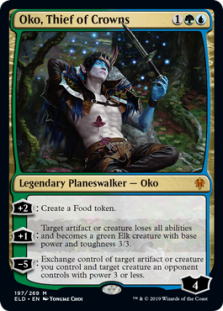 The shocking amount of Simic Whirza is no accident, nor indicative of an actual metagame shift. Apparently, it was a team deck. Team Lotus Box were almost entirely on Simic Whirza and evidently spread the word, if not directly then via their Twitter and Discord. As previously mentioned, most of the 4-Color decks appear to be built off the Simic deck, so Lotus Box may have influenced those, too. Having an entire team on the same deck necessarily boosted its numbers and resulting visibility. Their being high-level players meant that they did very well, as they may have with any deck.
The shocking amount of Simic Whirza is no accident, nor indicative of an actual metagame shift. Apparently, it was a team deck. Team Lotus Box were almost entirely on Simic Whirza and evidently spread the word, if not directly then via their Twitter and Discord. As previously mentioned, most of the 4-Color decks appear to be built off the Simic deck, so Lotus Box may have influenced those, too. Having an entire team on the same deck necessarily boosted its numbers and resulting visibility. Their being high-level players meant that they did very well, as they may have with any deck.
The other challenge in analyzing Simic Whirza is the deck's newness. There was no indication that Oko and Urza were a thing until Atlanta. Some players probably weren't fully prepared, made incorrect evaluations and decisions, and boosted Whirza's win rate. The true test is yet to come: if Simic Whirza is actually as good as it seems, then it will gradually absorb other Urza decks and maintain strong results. If it only worked thanks to surprise, it will fade, just as the Jeskai Ascendancy decks have.
Beyond the Team Deck
Looking past the Simic flood in Atlanta, big mana is the story. At Regionals, Amulet Titan followed by Tron were the best decks, and were the most popular non-Urza decks in Atlanta's Day 2, in keeping with Indianapolis's results. It is also worth noting that the Urza decks have 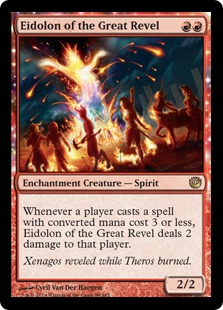 definitively shifted away from the combo versions and towards midrange since Indy. Interestingly, Jund was third at Regionals, as it was in Indy's Day 2, but it had no impact in Atlanta.
definitively shifted away from the combo versions and towards midrange since Indy. Interestingly, Jund was third at Regionals, as it was in Indy's Day 2, but it had no impact in Atlanta.
Instead, there's Burn and Crabvine. Burn makes sense, as Urza can't go nuts against Eidolon of Rhetoric and ramp strategies struggle to either race or interact with burn spells. Crabvine is an attempt to relive the Hogaak glory days using Hedron Crab and Merfolk Secretkeeper // Venture Deeper to fill the graveyard and go ham with reanimating creatures. The deck is very powerful, but also pretty dead to graveyard hate. Luckily for Crabvine, Modern players have gotten complacent and are skimping on hate.
Developing Trends
Urza, Jund, and Burn winning things isn't particularly surprising. However, it does beg the question of why it's happening. After all, banning Faithless Looting and unbanning Stoneforge Mystic was supposed to usher in a more midrange-based format. Part of this may be that the problems associated with actually using Stoneforge are preventing the expected shift. It could also be that with graveyard decks out of the way, ramp becomes the natural apex predator. The real reason is almost certainly not so simple. I see two possibilities:
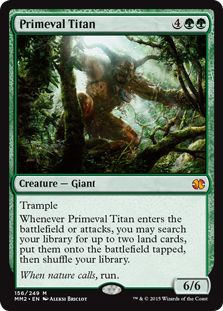 The first scenario is that Urza decks are defining the metagame, and big-mana decks are the benefactors. Urza, Lord High Artificer is an absurd card: a mana engine, card advantage engine, and threat, all in one. His power in midrange/combo decks is so high that there isn't room for any other blue deck. The deck combos out turns 3-4, has Engineered Explosives, and can run counterspells and discard to protect itself and push through other midrange decks. A strong lead doesn't matter: if Urza ever hits the board, many decks just lose. Jund is the only midrange deck with the discard spells, removal, artifact hate, graveyard hate, and clock to challenge Urza, and takes the remaining space for midrange decks while suppressing aggro. Jund is also quite good against the fast combo and Humans decks that Urza struggles against, which in turn beat ramp. With big mana thriving, Burn gets a boost.
The first scenario is that Urza decks are defining the metagame, and big-mana decks are the benefactors. Urza, Lord High Artificer is an absurd card: a mana engine, card advantage engine, and threat, all in one. His power in midrange/combo decks is so high that there isn't room for any other blue deck. The deck combos out turns 3-4, has Engineered Explosives, and can run counterspells and discard to protect itself and push through other midrange decks. A strong lead doesn't matter: if Urza ever hits the board, many decks just lose. Jund is the only midrange deck with the discard spells, removal, artifact hate, graveyard hate, and clock to challenge Urza, and takes the remaining space for midrange decks while suppressing aggro. Jund is also quite good against the fast combo and Humans decks that Urza struggles against, which in turn beat ramp. With big mana thriving, Burn gets a boost.
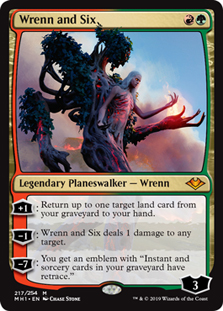 The second flips the causality, proposing that Jund is actually defining the metagame and Urza is the benefactor. Jund has always been a staple of Modern and received a lot of good cards recently, bringing old adherents back and adding new converts. Jund has excellent matchups against any deck relying on small creatures, particularly Humans now that Wrenn and Six exists. These decks can swarm and/or disrupt the Urza decks that keep Jund in check. Jund also has an advantage over other midrange decks in its discard and stronger, cheaper planeswalkers.
The second flips the causality, proposing that Jund is actually defining the metagame and Urza is the benefactor. Jund has always been a staple of Modern and received a lot of good cards recently, bringing old adherents back and adding new converts. Jund has excellent matchups against any deck relying on small creatures, particularly Humans now that Wrenn and Six exists. These decks can swarm and/or disrupt the Urza decks that keep Jund in check. Jund also has an advantage over other midrange decks in its discard and stronger, cheaper planeswalkers.
In either case, we are in for a lot more top-heavy Magic for the foreseeable future. Wizards almost certainly doesn't have enough data to make a banning decision yet, and will be more focused on Standard anyway. This means that decks will need to find a way to break through the Urza-Jund-Tron wall to find success.
Trouble Brewing
I don't like what I'm seeing. I really hope that Simic Whirza isn't the way of the future. A combo deck filled with do-nothing artifacts is fine. However, a planeswalker turning them all into 3/3 Elks forever is extremely format-limiting. Modern isn't Standard, and I hope that the deeper cardpool has the answers. We need to wait and see.



